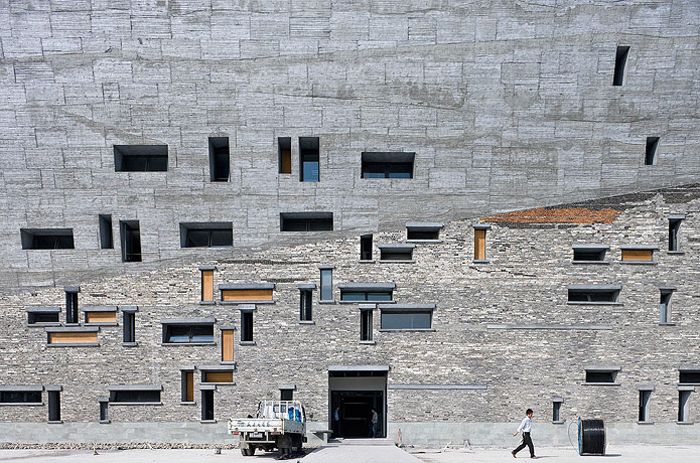
"In the eastern part of this province, near the sea, people suffer from typhoons, which cause many houses to collapse. They don’t have a lot of time to rebuild them, so they put the bricks back together randomly. I find the resulting architecture very beautiful."Playing off the vernacular and the modern (the NOT tradtional), the Ningbo Historic Museum by Wang Shu is akin to an archaeological slice through the urban development of the city. Reappropriating the local practice of reusing old building materials for construction. The result is a fine grain patchwork of local bricks and tiles (collected from demolished traditional houses), juxtaposed with brutal volumes of raw concrete; as if crafted by nature over a long period of time. The random windows suggests the taking apart and reassemblage of whole sections of the traditional brick houses into this bigger, monumental (almost inhuman) tomb.
The Ningbo Historic Museum is at once a nod to the history of the city of Ningbo, and also a stinging critique of the relentless destruction of the existing urban fabric in China in the name of modernity and progress.
"I want my architecture to tell people what life in this city used to look like. Ten years ago this was a very beautiful harbour city. Now everything is demolished. So I collected and recycled building materials from the area. For this reason, even though I won the competition, local government officials didn’t like my design....They think theirs is a modern city that needs a modern building. But when the building was finished and the people saw the real thing, they loved it."
" I did design the pattern on the walls of this museum. When the construction process started, people worked behind a scaffold. It was very secretive. Nobody saw what was happening, including me. Obviously, the craftsmen changed my design, but when they took the scaffold down I loved it, precisely because it was beyond my control."I like how the objet trouvé nature of the old building materials used for the building, is extended to the construction process. The architect sets parameters but does not know exactly what the final product will look like, as much as he (pretends) to want to predict and control it; it is left to chance. The construction process becomes a chance operation.
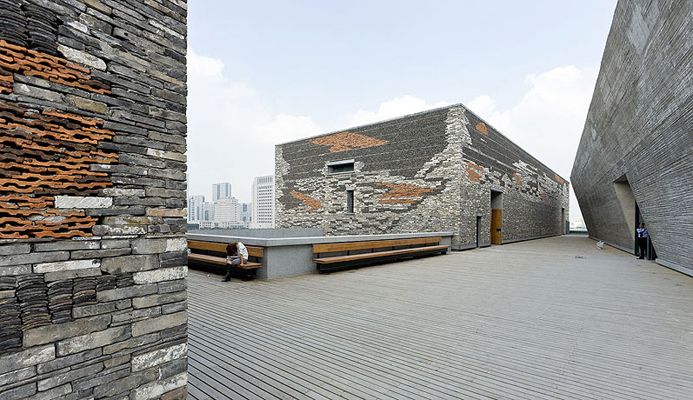
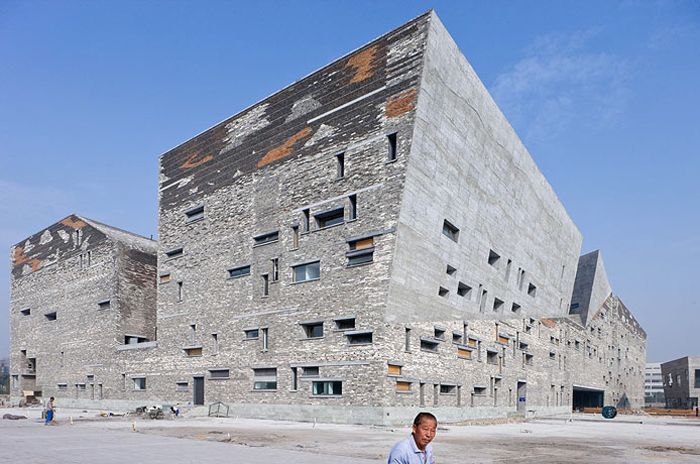
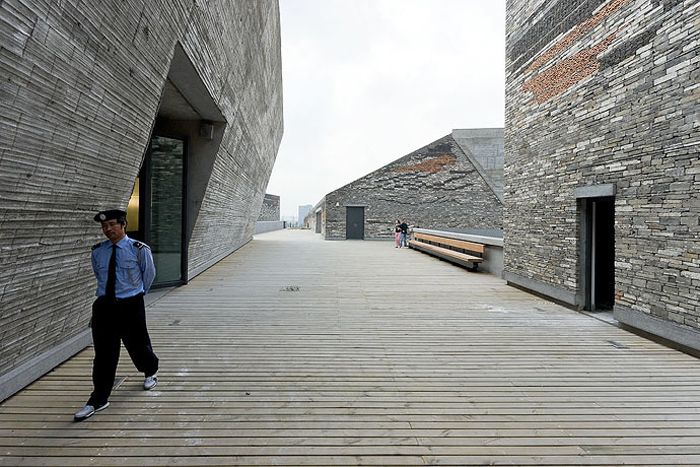
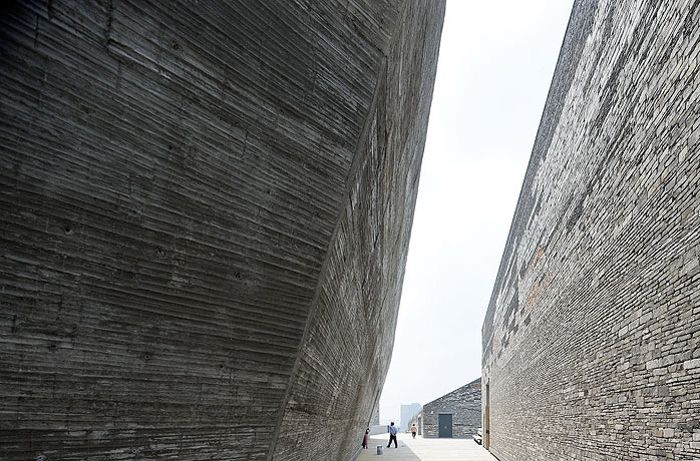

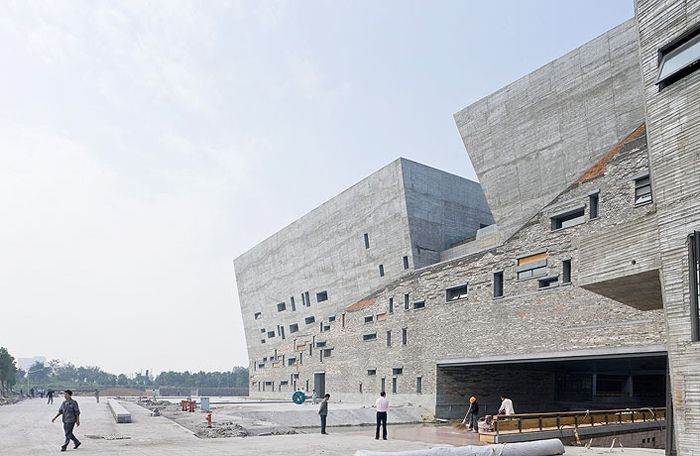
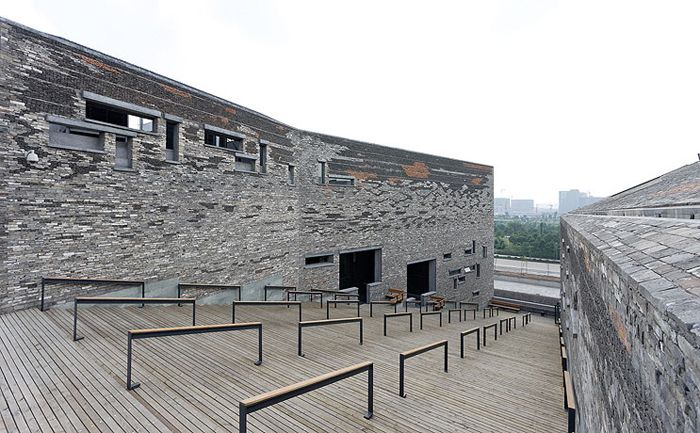
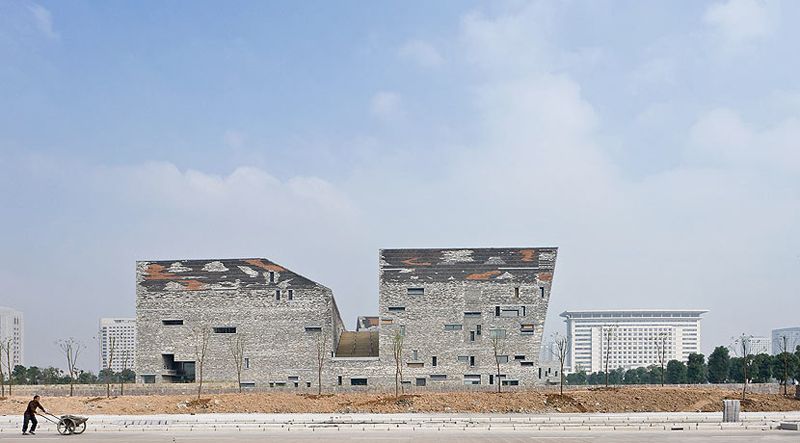
photographs by Iwan Baan
More on Wang Shu and his Amateur Architecture Studio
Local Hero | An Interview with Wang Shu
Mark Magazine #19 April-May 2009.

No comments:
Post a Comment